Or, an awkward post that combines pretty and serious about an awkward event that combines fun and fraught history
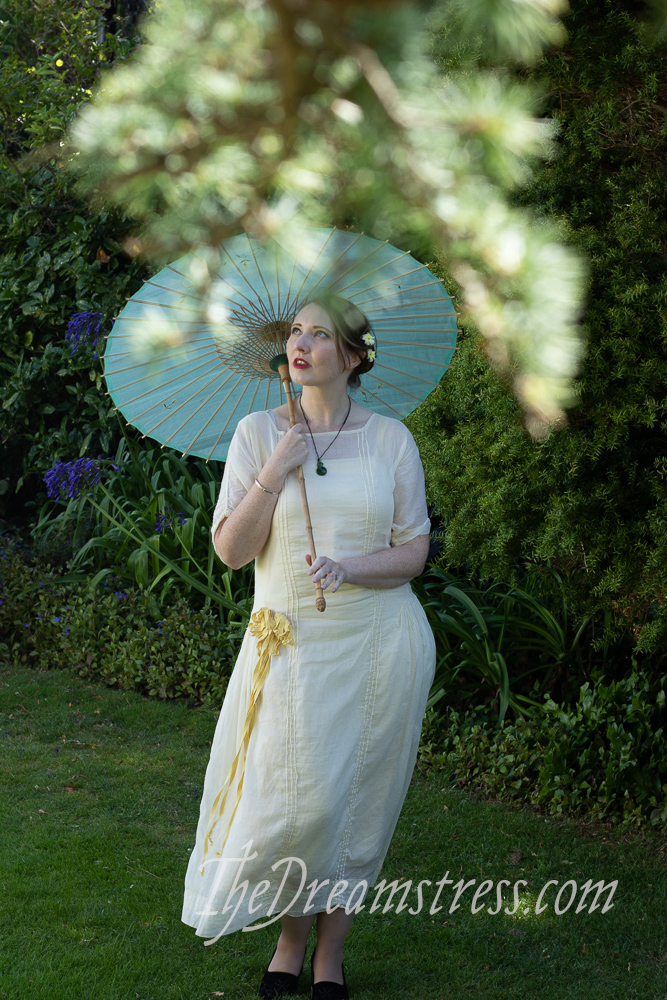
Waitangi Day is NZ’s founding holiday, somewhat analogous to the American 4th of July, Canada Day, or France’s Bastille Day.
It commemorates the first signing of the Treaty of Waitangi on 6 February 1840. Te Tiriti was signed by representatives of the British Crown, on one side, and MÄori Rangitira (chiefs) on the other.
The Treaty was drafted by British representatives with the intention of “establishing a British Governor of New Zealand, recognising MÄori ownership of their lands, forests and other possessions, and giving MÄori the rights of British subjects.” (quote taken directly from Wikipedia, as I don’t want to risk paraphrasing and getting it wrong!)
As the major legal agreement whereby non-Maori have the right to be in NZ (making us Tangata Tiriti – ‘people of the Treaty’, and MÄori are Tangata Whenua ‘People of the Land’), all aspects of modern NZ law & government are considered based on whether they agree with Te Tiriti.
However…
The Treaty of Waitangi was massively problematic right from the beginning.
First, Te Tiriti was written in two languages (English and te reo MÄori) by someone who was only fluent in one (English), and the meaning differs between the two texts in some very important ways. Among others, the English version says the MÄori are giving up sovereignty, the te reo version does not.
Second, New Zealand at the time was not a modern country, with a unified government. There was no paramount chief. Instead, there were hundreds of Rangitira across New Zealand, and many refused to sign the treaty.
So New Zealand’s founding document is a treaty where the two parties to it thought they were getting different things out of it, and where not all the parties on one side agreed to it.
Not surprisingly, this has caused problems over the years, and makes Waitangi Day a difficult holiday to commemorate.
The biggest commemoration is an event at the grounds at Waitangi attended by the Prime Minister. The Governor-General, the British Crown’s representative in New Zealand, does NOT attend this event. Instead they throw a garden party which any New Zealand citizen or permanent resident can apply to attend.
The garden party is usually held in Auckland one year, and Wellington the next. You enter a ballot in September, find out if you got in a month later, and have to supply your full name and that of your +1, so that they can check you out and make sure you are unlikely to be a security risk.
I’ve never entered the ballot, but thought that it would be a good thing to do as a proto-New Zealander (not a citizen but I can vote). And I got in! I asked Jenni to be my +1 as a fellow adopted-NZer.
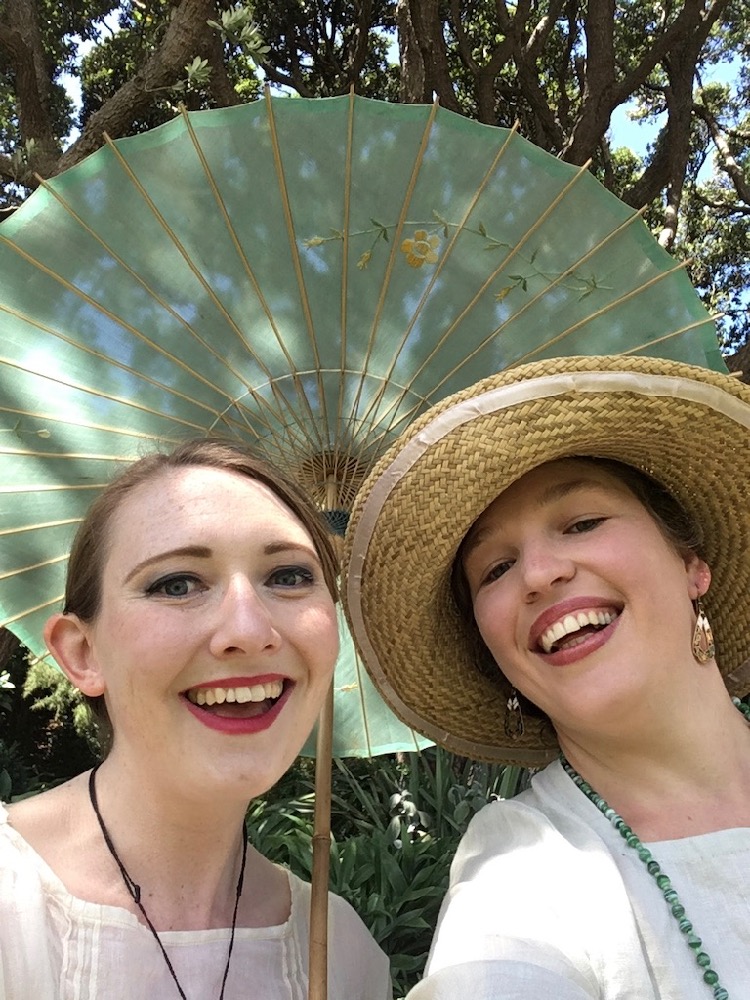
The Wellington Steampunkers have been going to the garden party in costume for years, and I know of other people who go in historical dress. Jenni & I decided to go in 1920s, because it’s subtle enough to maybe not be a costume, and would have been worn at Government House when it was young and new.

Jenni wore by beloved Not-a-1-hour Dress (and looked gorgeous in it, because Jenni always looks gorgeous, and everyone looks gorgeous in it).

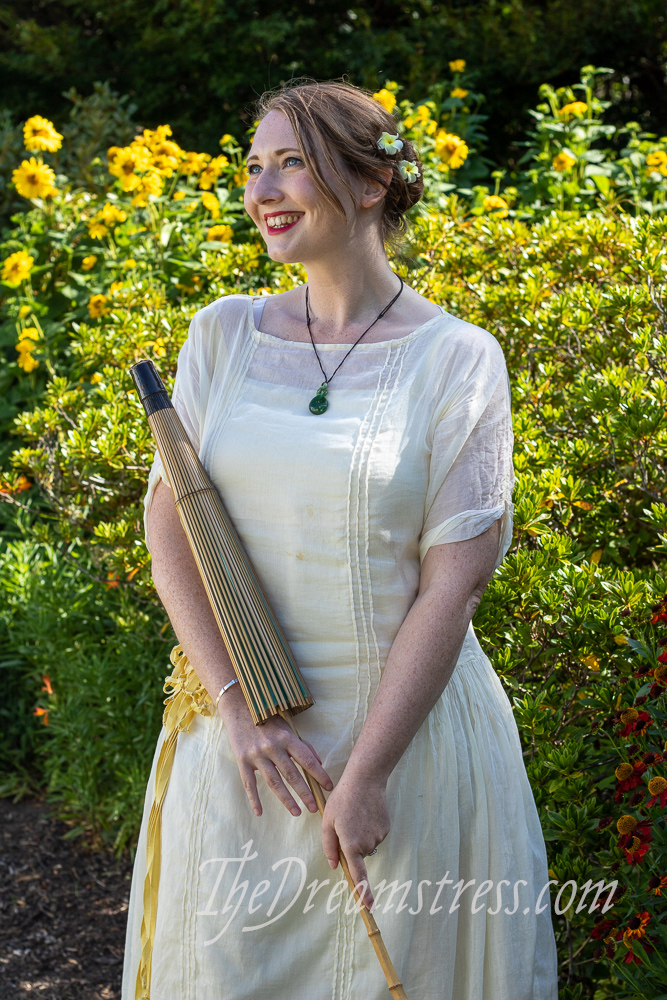
I made a new hat, which went extremely well except for the satin ribbon I used on the brim (and which is being replaced today), and an early 20s dress which fought me every step of the way, did not turn out as planned at all, and is currently being called the ‘Sad Sack’

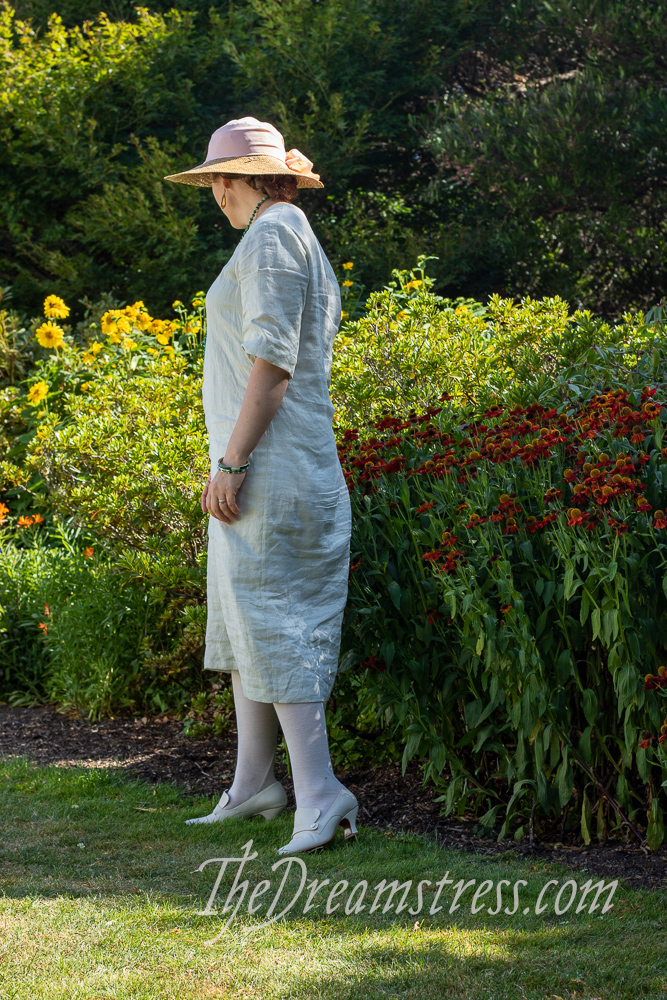
Although I was very unhappy with it in the moment, I have plans of how I’ll be wrangling it into submission….
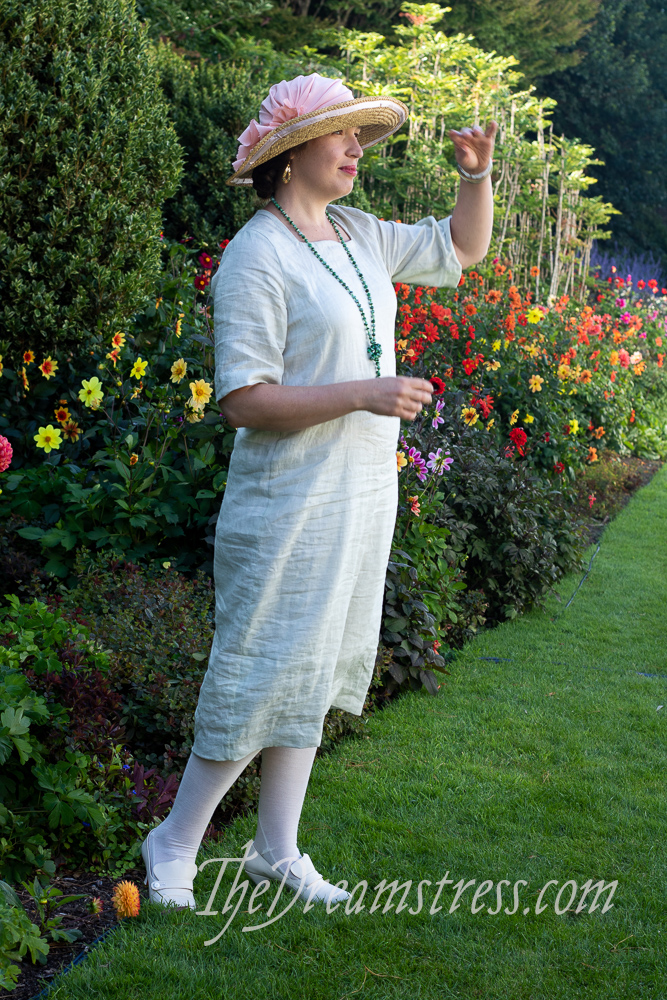
The garden party is held on the large lawn directly in front of Government House. Jenni & I got lucky, and found a bench tucked off to the side of the lawn behind the food tents, out of the way and in the shade, but where you could just see the stage where the G-G would make her address.

I was very interested in the speeches: how do you balance people in pretty frocks drinking wine and tea and eating ice cream with how fraught the event really is?
The Governor-General sidestepped it by focusing her speech on the environment, and how we could use MÄori principals of stewardship to care for it.
The more awkward ‘let’s talk about the actual Treaty a little bit’ (but only a very little bit) speech was left to MC Ward Kamo, who discussed the instructions Captain Cook was given towards NZ, and Lord Normanby’s instructions to Captain William Hobson that led to the Treaty of Waitangi
“The natives may probably regard with distrust a proposal which may carry on the face of it the appearance of humiliation on their side and of a formidable encroachment on ours.
These, however, are impediments to be gradually overcome by the exercise on your part of mildness, justice and perfect sincerity in your intercourse with them.”
As an example of ‘let’s not be grim and ruin the mood’ political speechmaking, it was very interesting.
After speeches, Jenni & I toured what we could of the gardens, bumping in to people I knew at every turn. Apparently half of my Wellington acquaintanceship had also managed to get tickets!
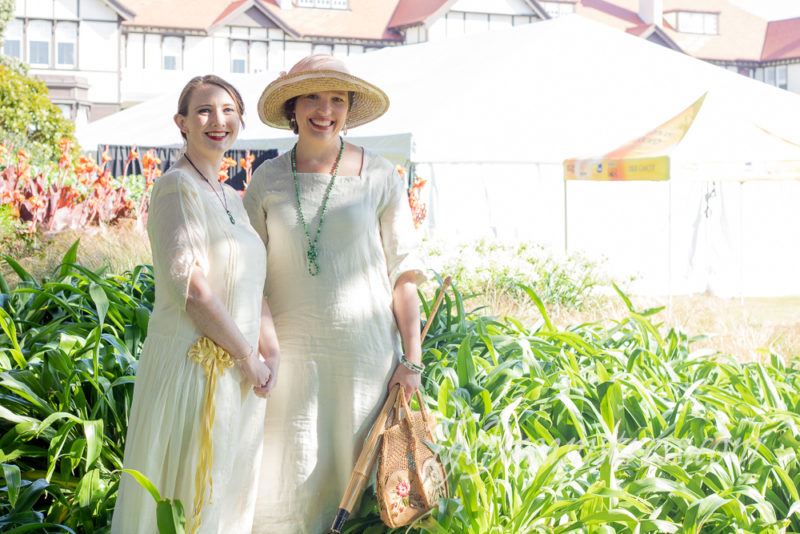
We admired the dahlias:
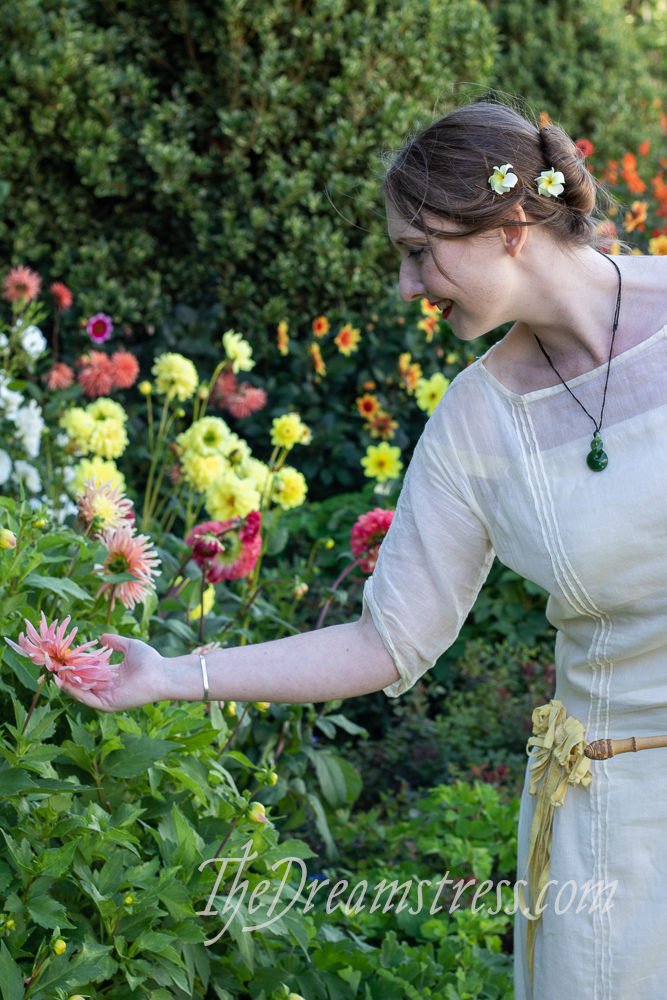
I succumbed to a final Nice Block:
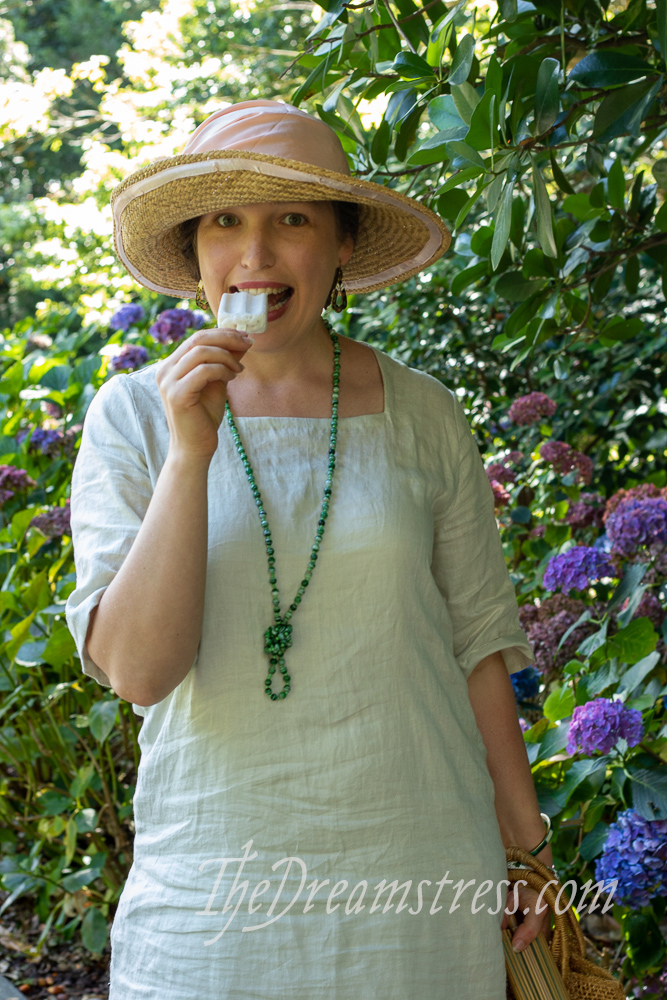
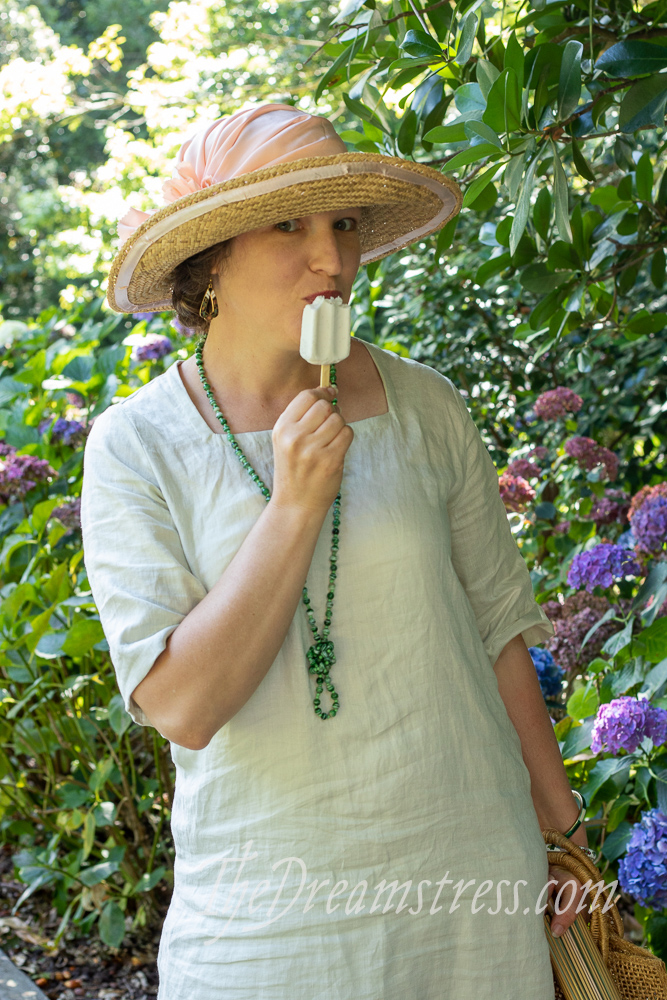
The lilies were blooming so I had to take a ‘Jenni as Clementine with the Lily’ photo (although I must note that Jenni does NOT have big feet).
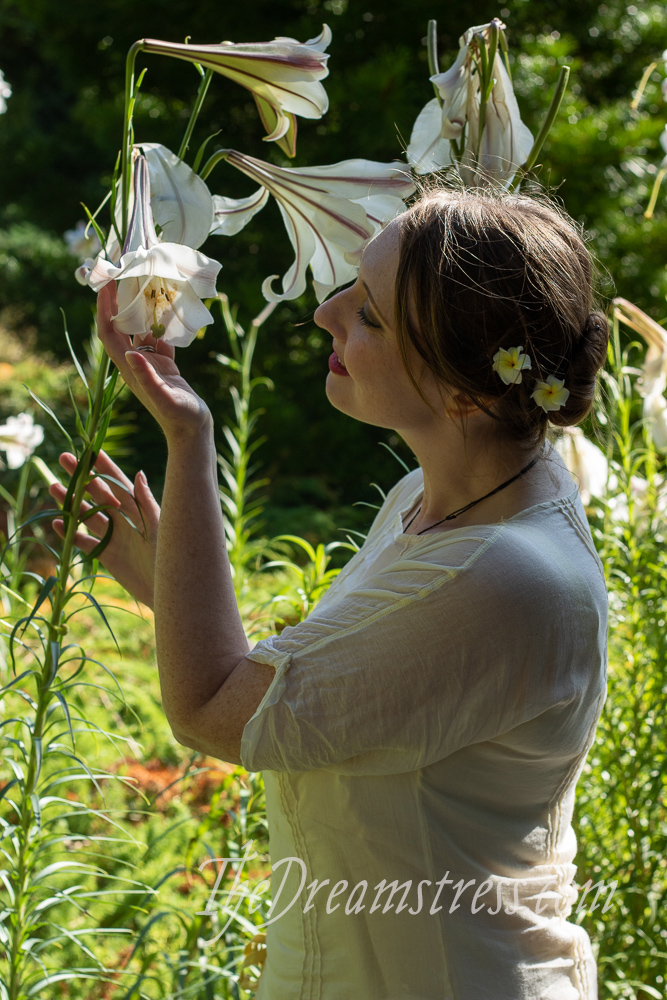
And then we skipped off down the garden path, heading for shoes-off, long baths, and naps:

It was a very interesting event: such a snapshot of New Zealand’s fraught relationship with the Treaty.

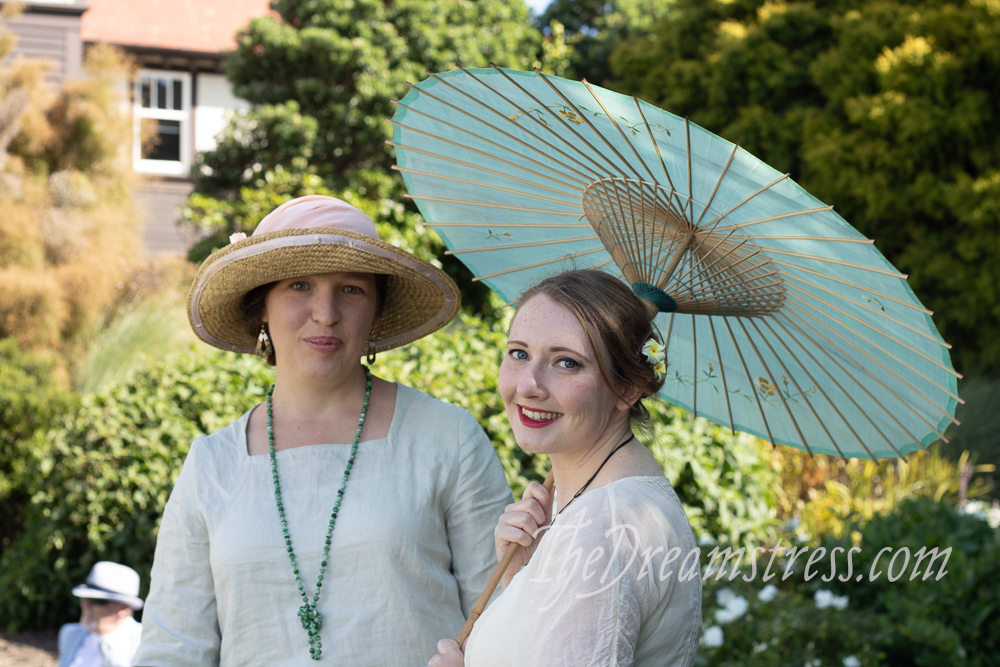
Thank you so much for the lovely and informative write up and gorgeous photos.
Love the Marigold reference!
Such a beautiful setting. Such an awkward history.
Both frocks look delightfully cool and comfortable.
Yay! Delighted someone got the reference 😉
I didn’t realize it was a reference to Marigold until the ‘big feet’ sentence! 😛
I’ve always wondered if that was a joking wink to the song, as ‘My Darling, Clementine’ also has very big feet!
What an interesting experience! Canada and New Zealand have very similar histories with regard to our treatment of Indigenous peoples, and are politically fairly similar. Your post is timely to me, because yesterday I finished a book written by a Maori spiritual healer and a Western-trained psychiatrist on their work at Maori Child and Family Services. It sounds like there’s some important work being done on your shores, and more yet to do, as there is here.
Ooh was that Wiremu Niania by any chance? I had the immense privilege of meeting him during my medical degree here in NZ and he has some stories to tell
It was! Fantastic read. Thought-provoking, for sure. I appreciating hearing both perspectives, as well as the voices of the youths themselves and their families.
Sounds like something I need to add to my reading list!
I’d certainly recommend it! It’s called “Collaborative and Indigenous Mental Health Therapy: Tataihono — Stories of Maori Healing and Psychiatry” by NiaNia, Bush, and Epston
ALMOST wrote a too-long post. Deleted it. This book (I also read it, and use very often in my own practice–albeit in the US with different populations) is phenomenal, and definitely something anyone and everyone should read, clinician or no. A too-wordy post by a non-Indigenous person is exactly the unconscious racism that this book aims to shine through, and this book helps a clinician to listen and learn and only after that, treat.
Sorry, should edit to put the word “together” after “treat”. Because this book advocates for the clinician to be the client’s teammate and student, rather than the more traditional (and paternalistic) role of infallible leader. So sorry for mis-writing…again.
interesting and lovely post. at least NZ is having some conversations about the fraught-ness of it all… the lilies were stunning, and your frocks looked beautiful.
Thank you for taking us along. I’ve so appreciated how you have introduced us to NZ these several years, offering us a view of the complexities, the sadness, bits of its cultures, and the glory of its physical environment.
Very best,
Natalie in KY USA
You’re welcome! I enjoy seeing the world through other people’s blogs, as much as their costuming, and I enjoy getting to share NZ!
Have you read “Huia Come Home” by Jay Ruka? Highly recommended.
You both look lovely and cool (I am so ready for the summer to be over, or at least to cool down a bit!) and the lily photo is gorgeous. Love your hat, too! As a habitual headwear-wearer, I’m always stoked to see someone breaking out the hats.
I have not! I’ll have to add it to my reading list.
Hat’s are so fabulous: no sunburn and I can leave off the sunglasses and not get a headache!
Your blogs about history, including the complexity, are always so well presented and so informative. I am so glad that we live in a time of historical criticism, and a clarion call to action. Thank you for doing that for us all.
The dresses look so nice. Remind me–don’t you also have a pink floral 20s dress? (Can a person ever have enough 20s dresses?) Looking forward to seeing your sad sack shift (–dress pun!) into something else!
Your posts on the more problematic parts of NZ history are always interesting from my Australian perspective, given NZ is much better at managing the tension between European and Maori culture and all the past wrongs than Australia is at managing our treatment of Indigenous people and culture. I’m not saying it’s perfect, by any stretch, but from where I sit you’re lightyears ahead of where we are.